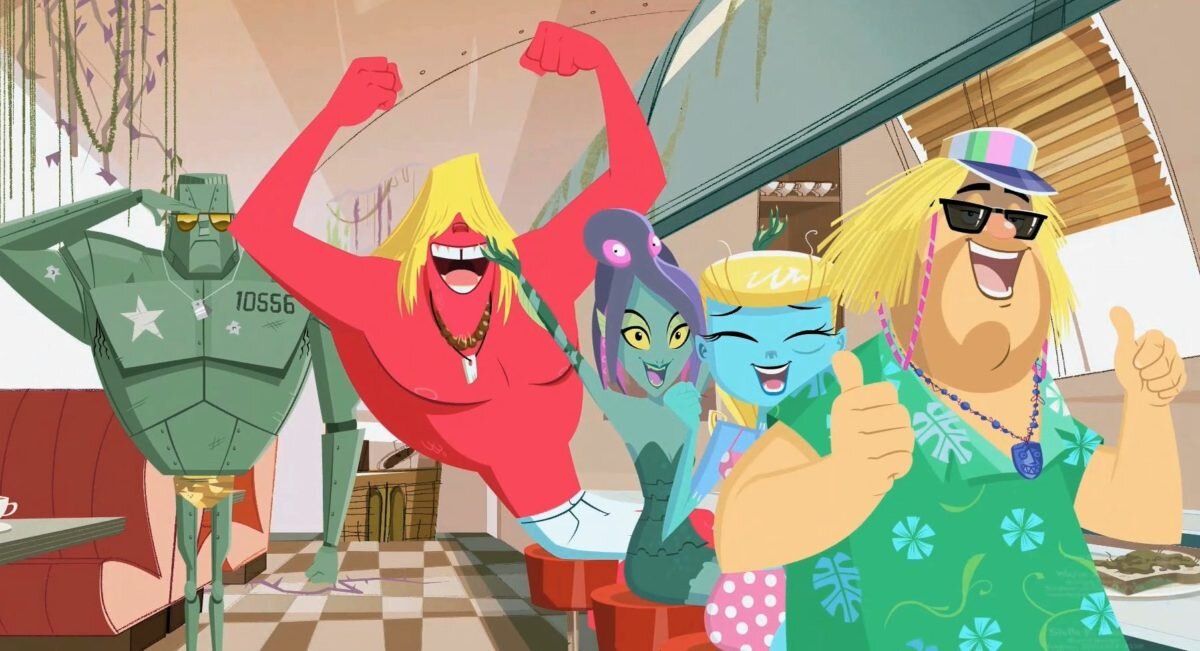Beat Bugs, Beyond Entertainment
WHAT ARE THE GOVERNMENT POLICIES FOR CHILDREN’S CONTENT?
The regulatory history of commercial broadcasting in Australia has always had three competing interests:
a commercial imperative to reward shareholders;
a cultural imperative to reflect the multicultural nature of Australia’s population and promote Australians’ cultural identity; and
an industry imperative to foster support for local production.
Under the Broadcasting Services Act 1992 (the BSA), the Australian Communications and Media Authority is required to create standards for commercial television broadcasters relating to children’s television and Australian content.
Under the Broadcasting Services (Australian Content and Children’s Television) Standards 2020, commercial free-to-air television broadcasters are required to broadcast minimum amounts of new Australian content. Whilst this can be made up of a combination of drama, documentary and children’s content, previous minimum quotas for children’s content have been removed, meaning that a broadcaster can elect to broadcast no children’s content and face no penalty. The overall quotas for Australian content were also slashed when these standards were brought in in early 2021.
There are also quotas for Australian-made content that apply generally to the commercial broadcasters.
There is a general obligation on subscription television broadcasters to spend 10 per cent of their expenditure on drama channels on local Australian content. Most of this content is for adults.
There are no specific obligations on the ABC to broadcast local children’s content. However, the ABC does broadcast some local children’s content on ABC3. There are no specific obligations on SBS or on SVOD services to show or commission Australian content.
The Government has indicated it favours a modest regulatory requirement for SVOD services to show Australian content, but is yet to address the critical issue of protecting children’s content on these services.
WHY HAVE THE QUOTAS?
At the time the Broadcasting Services Act was passed, the Parliament noted it intended commercial television broadcasters to broadcast Australian content which:
reflects the multicultural nature of Australia’s population;
promotes Australians’ cultural identity; and
facilitates the development of the local production industry.
The Government also required commercial television broadcasters to broadcast children’s content.
A strong regulatory environment for commercial broadcasters is seen as important because of the power of the television medium reaching nearly all Australian households for free and as a quid pro quo for access to the spectrum: a public good. There are also other regulatory protections for these businesses such as no competition from new commercial television licensees and prioritised access to valuable sports rights through the Government’s Anti-Siphoning List.
Australians on average watch 2:43 hours of commercial TV each day. Some of this content should be age appropriate and provided specifically for children to help their development, learning and entertainment.
Streaming services are now in most Australian homes and are increasingly the entertainment platform of choice. They are also deriving rich economic benefits from operating in Australia. It’s appropriate that they be required to contribute back to Australian society through a requirement to make and show locally made content that reflects Australia back to itself.
WHAT IS THE PROBLEM?
Under the new regulatory framework for commercial free-to-air television, there are no minimum requirements for children’s content. This has led to drastic cuts in the availability of new Australian content made specifically for children.
Screen Australia’s data shows that whilst spend was steady on last year ($48m compared to $51m), the number of titles halved (7 down from 14) and the number of hours more than halved 29 down from 87. Animated titles, typically commissioned by commercial free-to-air broadcasters were down 75%, hours by 77%, budgets by 66% and spend by 52%.
There is also no clarity on what minimum requirements will apply to streaming services, which creates a ‘regulatory gap’ in which children’s content has no specific protections on any media platform.
ABC and SBS do not have content quotas and their budgets have been cut by the government and the ABC is reducing its expenditure on Children’s content. This means while the ABC does show a lot of children’s content now, this is no guarantee that it will show children’s content in the future.
WHAT IS AT RISK?
With no Australian children’s content on commercial television, we’ve lost the opportunity for children to be educated and entertained and see children like themselves on these key broadcast services. It has diminished the diversity of content available for children and has had devastating impacts on the local production industry for children’s content.
If action is not taken to ensure children can see Australian content made specifically for them on popular streaming services, the impact on audiences and the industry will be devastating.
HOW CAN THE PROBLEM BE FIXED?
The Government is expected to respond to its Media Reform Green Paper in early 2022. It is critical that a meaningful Australian content safeguard for streaming services is included and that it features a specific protection for Australian children’s content.
We also need a thorough review of the situation on commercial free-to-air television, as early signs are that deregulation has had serious negative impacts for audiences and industry.
WHAT CAN YOU DO?
You can write to your local member asking his or her help to save children’s content.
Monster Beach, BES Animation
JOIN US

